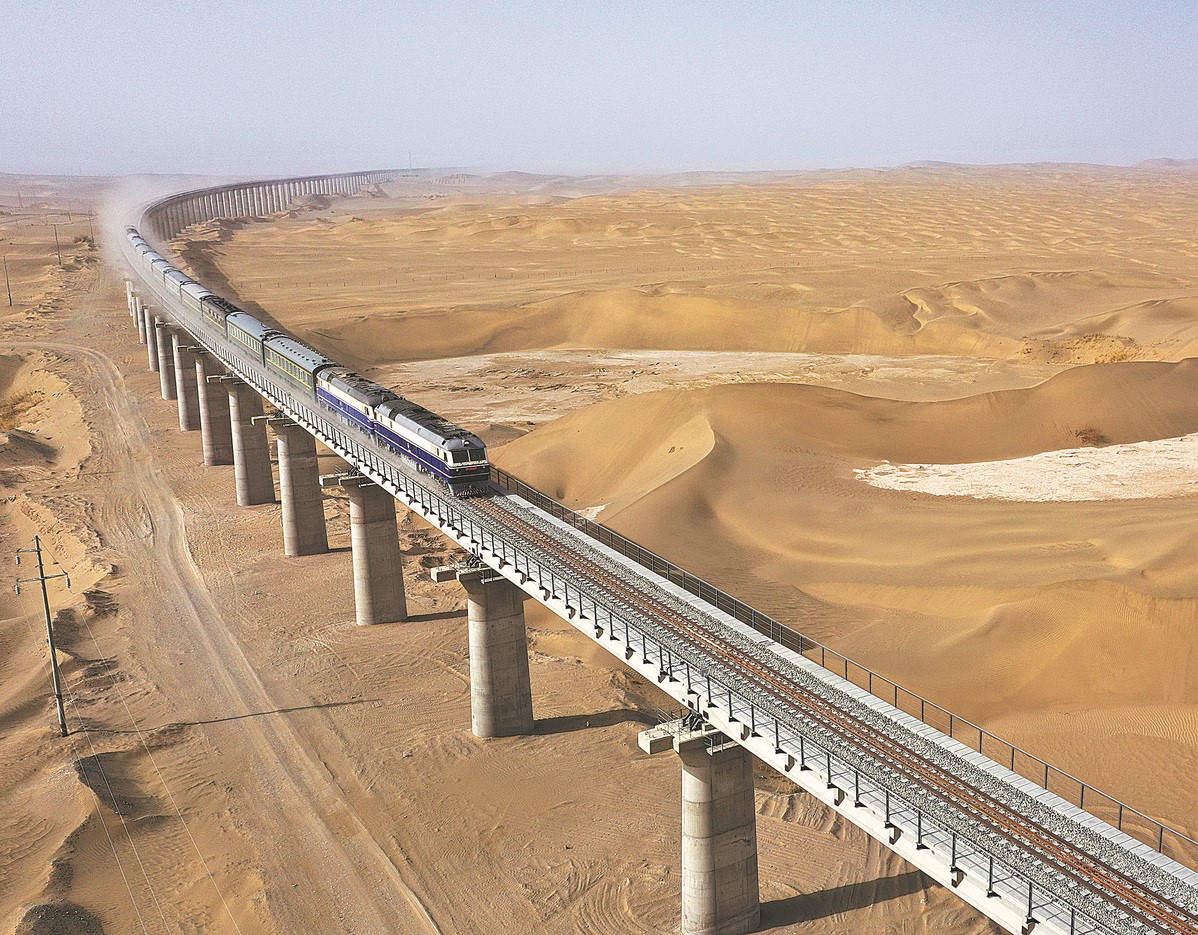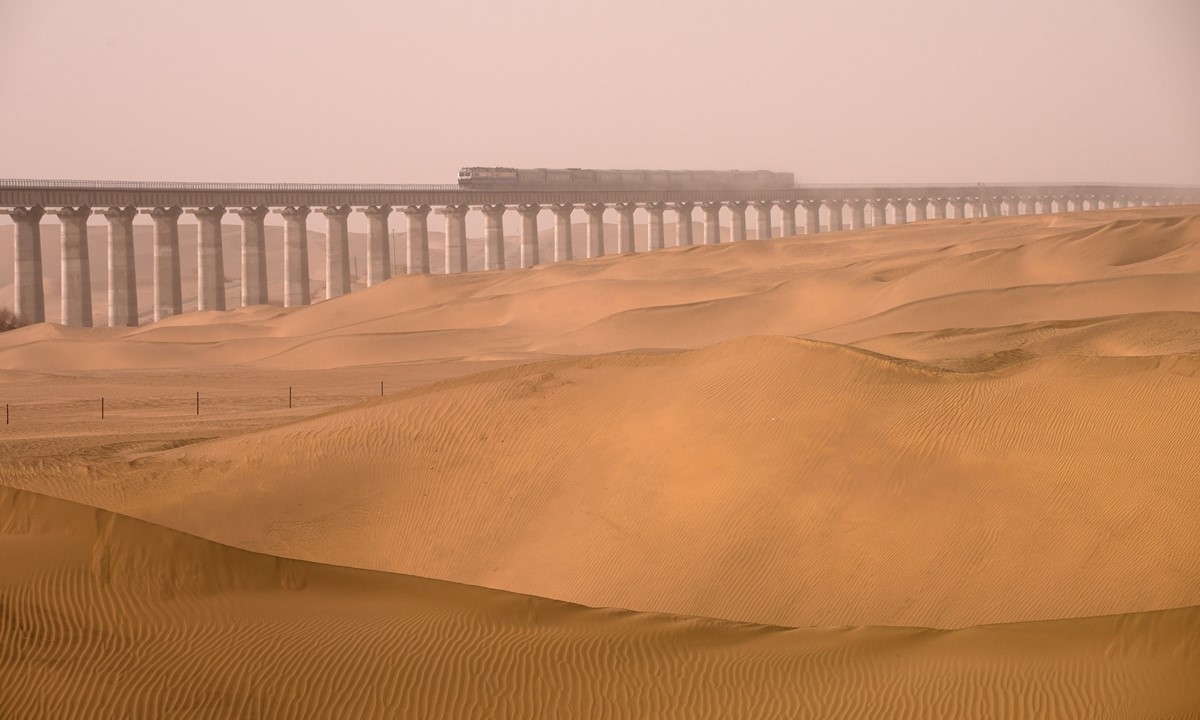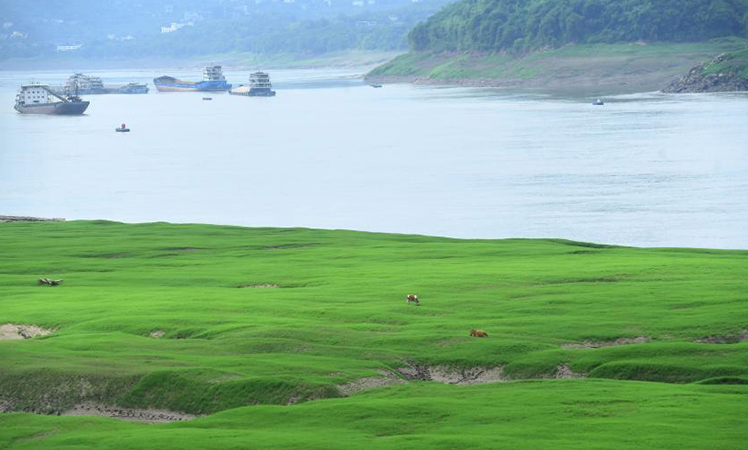World’s first railway loop around a desert opens in NW China’s Xinjiang
As the No. 5818 passenger train sounded its horn and left the station at 10:53 a.m. on Thursday, June 16, 2022, the Hotan-Ruoqiang Railway was officially put into operation in northwest China's Xinjiang Uygur Autonomous Region, forming the world's first railway loop circling a desert.
The railway, which connects Hotan city in southwestern Xinjiang and Ruoqiang county in its southeast, provides passengers with an end-to-end journey taking just under 11 and a half hours, and has a designed speed of 120 kilometers per hour along with 22 stations on its route. Moreover, the line is capable of being electrified in the future.
The Taklimakan Desert, with a size slightly smaller than Germany, is the world's second-largest shifting sand desert. About 65 percent of the new line-or 534 km-traverses a sand and storm zone inside the desert, which made construction tremendously difficult. Construction, which began in 2018, used a method of prefabricating 434 bridge piers and then assembling them on site.

Photo taken on June 16, 2022, shows the first passenger train of the Hotan-Ruoqiang Railway leaving its station. (People’s Daily Online/Raela)
Five bridges with a total length of 49.7 kilometers were built with trains running on top of them, while sand swept across below. The builders created 50 million square meters of grass grids and planted 13 million sand-adapted plants, such as sea buckthorn, in order to protect the railway.
Together with three existing railways that trim the ridges of the desert, the operation of the Hotan-Ruoqiang Railway will make the world's first railway loop around a desert a reality. The new line will further boost railway connections in the western border areas of China and facilitate the flow of people and goods, as well as promoting the development of regions along their routes, not to mention having the effect of boosting ethnic unity in the region, bolstering national defense and promoting rural revitalization, a representative from the state-owned railway operator China State Railway Group said.

A train goes on a test run along the Hotan-Ruoqiang Railway on March 11. The 825-kilometer line opened to the public on Thursday, June 16, 2022, marking the completion of the world's first railway loop circling a desert. (Photo/Wen Xinghua)
“I’ve been looking forward to this day of the railway opening to traffic through my hometown ever since the construction began as it offers us more options to commute,” said Corbankhan Matrozi, a college student from Yutian county, noting that “a lot of us bought the first train tickets just to experience what it feels like to travel through the sea of sand.”
“The loop railway's lift to regional economic development won't be measured by addition but by multiplication, and the railway is set to greatly boost the economy of southern Xinjiang,” said Sun Zhang, a mass transit expert and professor at Shanghai Tongji University.
“We’ve loaded 2,752 tons of coal onto this train, saving our company 13.5 percent of the cost compared with before when the goods had to detour through Kashgar,” said Huang Wei, CEO of Xinjiang Huoyanshan Coal Industry Co., Ltd. “The railway is so much more efficient as a new passage to transport our goods,” Huang said.

A train moves along the 825-kilometer Hotan-Ruoqiang Railway in Northwest China's Xinjiang Uygur Autonomous Region in a test run. (Photo: Courtesy of China State Railway Group)
The relatively low speed of the railway means it can carry both passengers and cargo, which will be a boon for the resource-rich region, Sun said.
With the construction of the China-Kyrgyzstan-Uzbekistan (CKU) Railway seeing positive signs of getting started after years of delay, the loop railway connecting all parts of southern Xinjiang will help with the circulation of goods both domestically and internationally. Kashgar, one of the main regional transport hubs, could become a connection point for international and domestic circulation, Sun predicted.
Xinjiang has made substantial investments into railway development to build a more extensive transport network. By the end of 2021, the region had 8,151 km of railways in operation, which is of great significance to promoting the region’s economic and social development.
Photos
Copyright © 2022 People's Daily Online. All Rights Reserved.









